Power Oil Rostock operates one of the largest oil mills in Germany with an annual processing capacity of 1,000,000 tons of rapeseed. GIG Karasek installed a thin-film dryer system for drying lecithin for the company in a very confined space.
Lecithin – from by-product to valuable animal feed
The Power Oil Rostock oil mill presses and extracts rapeseed oil from rapeseed. Rapeseed extraction meal is produced as a by-product, and the valuable lecithin it contains is used to produce high-protein animal feed.
Tobias Hertling, Project Engineer at Power Oil Rostock says:
"With the new system, we can extract an important, valuable material from a by-product that is used as a natural emulsifier in animal feed and food production. At the same time, we are expanding our product range and minimizing waste."

Figure 1: Valuable lecithin as animal feed © Adobe Stock
The raw material for lecithin extraction is crude rapeseed oil, which is contained with a residual proportion in the grist. This crude oil is extracted and degummed by means of a centrifuge, the result being an aqueous lecithin-oil-water mixture with a water content of 25 to 50 percent. By drying in a drying unit under vacuum, the viscous lecithin is obtained from the gelatinous mass.
GIG Karasek supplied the drying system with two thin-film dryers and, as the EPC contractor, was responsible for the complete execution of the project work (engineering, procurement, and construction of the drying system, including tanks, pumps, piping, valves, steel structure, insulation, EI&C, HSE, and commissioning).
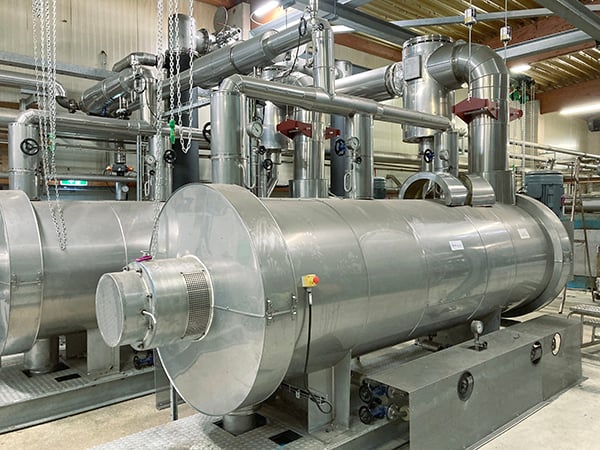
Figure 2: The two thin-film dryers are installed in parallel at Power Oil Rostock. © GIG Karasek
Thin-film dryer: gentle drying of heat-sensitive lecithin
Thin-film dryers are a special type of thin-film evaporator that can be designed vertically or horizontally. In principle, both variants can be used for lecithin drying. For rapeseed and sunflower lecithin, the horizontal thin-film dryer is generally used, while in South American countries, for traditional reasons, the vertical thin-film dryer is preferred for drying soybean lecithin.
Drying is an important stage in the lecithin process. The advantage of the thin-film dryer lies in the gentle drying process of high-viscose fluids or streams containing solids, which is where conventional systems reach their limits with heat-sensitive products such as lecithin.
Rotors equipped with special wiper elements are used as the distribution system, which distribute the lecithin-oil-water mixture continuously and evenly over the entire area of the heating wall, while at the same time ensuring a turbulent film.
The rotor blades do not touch the heating jacket, but prevent incrustation or blocking of the heating surface due to the wiper elements arranged with a gap of 2 to a maximum of 5 mm.
The wiper elements are manufactured differently depending on their position to achieve an optimal drying process. There are conveying and wiping elements, which in turn differ in terms of the amount to be wiped or conveyed.
Precision work in an existing production hall
The Power Oil drying system is capable of producing food grade lecithin and consists of two horizontal thin-film dryers, droplet separators and condensers, a feed tank and rapeseed oil tank, two coolers, and the tank farm with three tanks.
Karl-Heinz Pichler, Head of Plant Engineering Thin-Film & Short-Path Technology at GIG Karasek explains:
"Power Oil opted for two parallel thin-film dryers to ensure some flexibility in terms of partial-load operation. At the same time, there was a requirement to install the new system in an existing production hall with very limited space. A real challenge, but one that we were able to overcome successfully."
The two dryers with droplet separators and condensers are located on the upper level, while the feed and rapeseed oil tanks and coolers were installed on the lower level. Only 12 x 5.8 x 6.5 meters were available on each level for the construction of the lecithin drying plant.
The project started in January 2021 and was handed over to Power Oil in October 2022. The core components were manufactured at the company's own factory in Attnang-Puchheim, Austria.
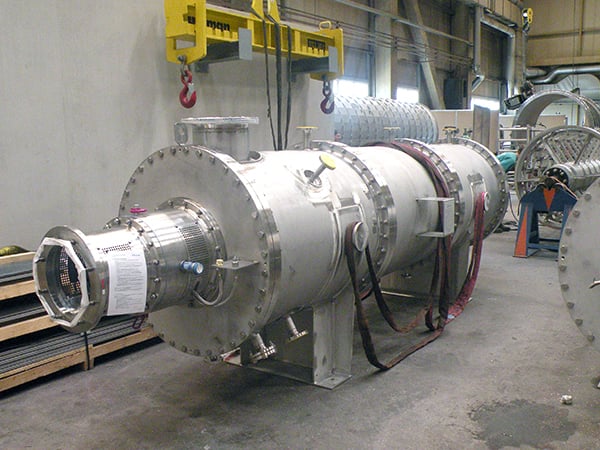
Figure 3: The thin-film dryers, droplet separators, and condensers were manufactured at the GIG Karasek factory in Attnang-Puchheim, Austria © GIG Karasek
Thin-film drying - step by step
The drying process of lecithin involves several steps that ensure smooth and reliable processing. High quality standards are achieved through efficient buffering, drying, cooling, and sampling in the system.
1. Feed tank and emergency rapeseed oil tank
The oil-lecithin-water mixture from the degumming process is first fed to the feed tank, where it is collected and buffered. There is an agitator in the feed tank to keep the liquid moving.
Behind the feed tank hides a smaller rapeseed oil tank, which is intended for emergencies. If the lecithin sits in the pipes for a long time due to a power outage, for example, then it tends to coagulate with certain water contents and can solidify. This can be counteracted with an emergency rapeseed oil rinse. Lecithin is also dispersible in water, but true solubility of lecithin can be achieved in rapeseed oil.
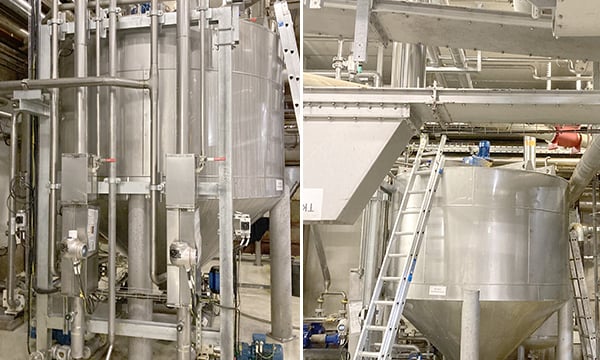
Figure 4: Feed tank for the wet lecithin slurry © GIG Karasek
2. Thin-film dryers
From the feed tank, the process continues to the steam-heated dryers, where the water is evaporated under vacuum. The dried, viscous lecithin then flows through tubes to the lower level. The pipes are equipped with electrical trace heating to prevent the lecithin from solidifying.
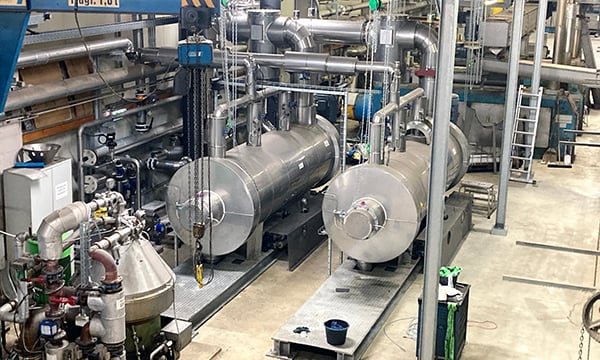
Figure 5: Installation of the dryers in a confined space. © GIG Karasek
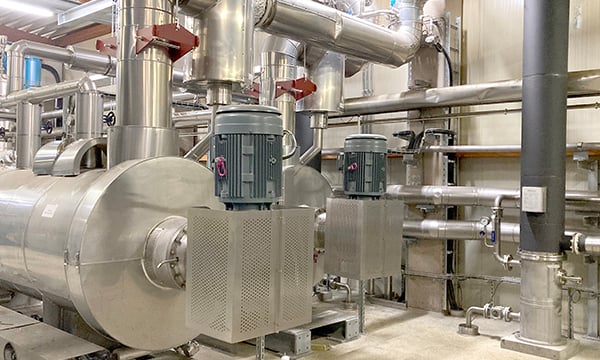
Figure 6: The thin-film dryers, above the droplet separator and to the right the insulated condensers. © GIG Karasek
3. Coolers
Once in the lower level, the lecithin is pumped to the coolers and cooled down. A sight glass for inspection is installed in the pipe that transports the lecithin from the upper to the lower level. After cooling, the lecithin is pumped into the tank farm via a heat-traced transfer pipe.
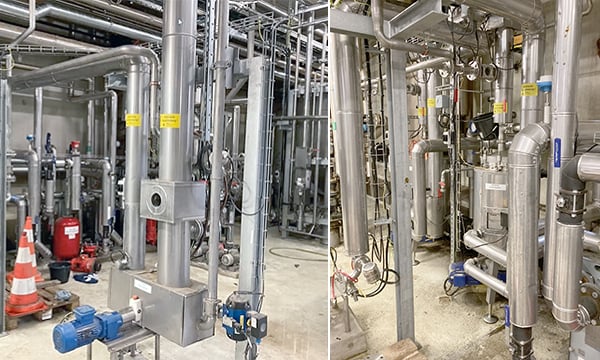
Figure 7: Picture at left: Pipe with sight glass to check the lecithin, and underneath, the pump to convey it to the rear to the coolers. Picture at right: The coolers of the lecithin drying system. © GIG Karasek
4. Tank farm
The tank farm currently comprises three tanks and can be expanded by a fourth tank at any time. The space for this has already been taken into account in the planning.
Before the lecithin is pumped into one of the two smaller tanks, sampling and evaluation takes place in the laboratory.
After inspection has been carried out, the lecithin is ready for collection, and a small tank can be used to fill a truck. The exact filling quantity is recorded by a measuring station and is used for billing.
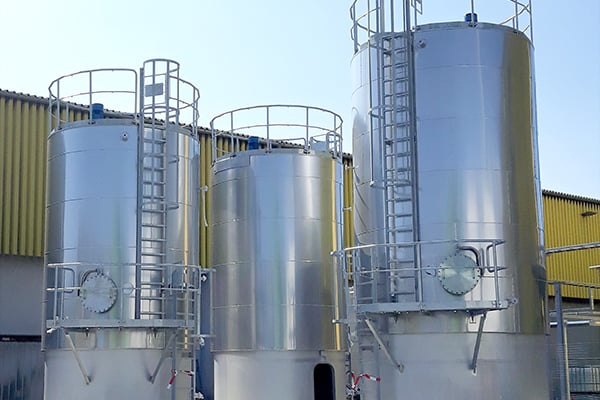
Figure 8: The foundation and masonry of the tank farm were constructed by Power Oil, while the tanks, supports, and piping were built by GIG Karasek. © GIG Karasek
5. Sampling points
The system has a total of eight sampling points. Of these, two each sample the feed and the dried lecithin; the remainder are for sampling the tanks in the tank farm. Sampling and evaluation are carried out several times a day by the laboratory of Power Oil Rostock.
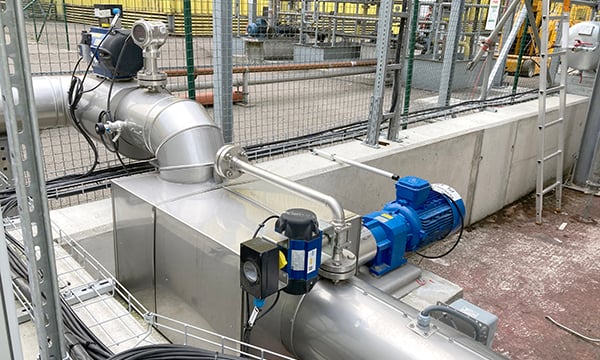
Figure 9: Sampling point © GIG Karasek
Fully automatic system with low maintenance requirements
The system operates fully automatically and is equipped with a unit for monitoring the bearings and seals. The lubricant cartridge only needs to be changed twice a year. The amount of work involved in normal operation is therefore very low. The same applies to the annually scheduled maintenance and cleaning of the system. Thanks to the high safety standards, absolute safety of workers during operation is also ensured.
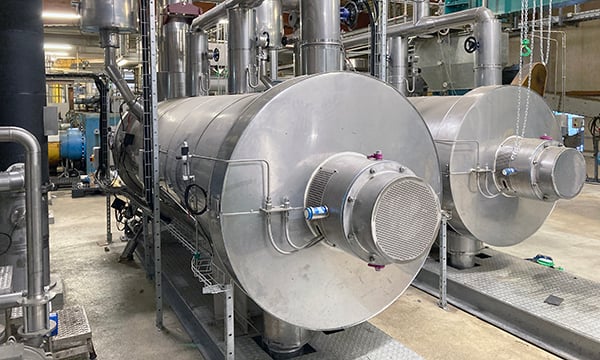
Figure 10: The blue lubricant cartridge for lubricating the bearings is easy to replace and only needs to be changed twice a year. © GIG Karasek
A powerful yet gentle solution
Tobias Hertling sums it all up:
"GIG Karasek's thin-film dryer system offers us a powerful yet gentle solution. The drying of the wet lecithin slurry is one of the most demanding stages in the lecithin process, so it is of great importance that we achieve gentle drying with a short holding time and low temperatures."
About Power Oil Rostock
Power Oil Rostock GmbH has existed since 2006 and is a subsidiary of Getreide AG. With an annual processing capacity of 1,000,000 tons of rapeseed, the company operates one of the largest oil mills in Germany.
The product range includes pure rapeseed cooking oil as well as various blends. In addition, the sustainably produced rapeseed oil is used in biodiesel production as a starting point for the production of rapeseed methyl ester. Furthermore, it is used as feed oil for fish cultures and other animal species. As by-products, Power Oil produces rapeseed extraction meal and lecithin for feed production.




